Cape Helles is on the southwest tip of the Gallipoli peninsular. The initial landings were made on 25th April 1915, which included 1st Battalion KOSB troops (regular army). The 1st/5th KOSB territorials landed on 6th June 1915.
Sunday 25th April: 1st KOSB landing at Y beach
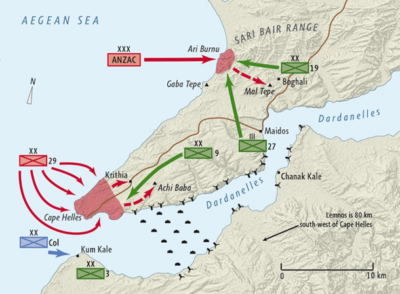
The 1st KOSB landing took place on Y beach at 5.30 am, initially encountering only four Turks. However, Ottoman troops amassed and attacked in the late afternoon and early in the next morning, losing half of their soldiers and killing a third of British troops, including 1st KOSB’s commander Lieutenant Colonel Archibald Koe. The Ottomans were repulsed by a bayonet charge and retreated, after which the British troops also left, failing to consolidate the ground that had been won.
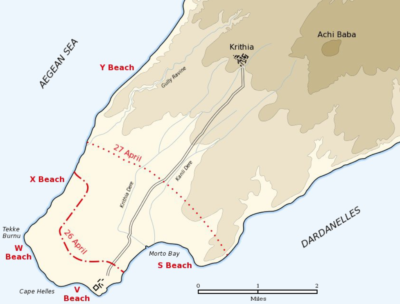
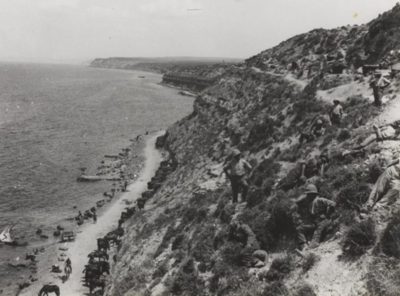
Shortly after the landings, William Armstrong was badly injured and died of wounds. James Dalgliesh was killed within two weeks.
Deaths
| Date | Surname | Forenames | Section | Rank/No. | Age | Address | Comments |
|---|---|---|---|---|---|---|---|
| 5th June | Maxwell | William Armstrong | 1st KOSB | Private 6878 | Crown Cottage | Died of wounds | |
| 6th June | Dalgliesh | James Buchanan | 1st KOSB | Lieut Corp 9480 | 36 | 12 Ednam Street, Annan | Son of the late William Dalgliesh, carter, Langholm |
Sunday 6th June 1915: 1st/5th KOSB landing at V Beach
The 1st/5th KOSB territorials sailed from Liverpool on 24th May 1915 on the Cunard Line’s RMS Mauretania, holder of both the eastbound and westbound transatlantic Blue Riband speed records.
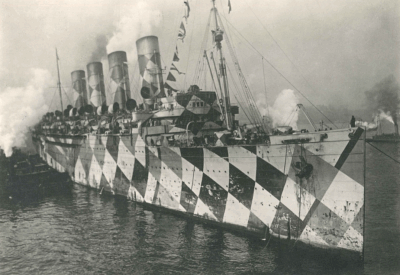
The Mauretania had featured regularly in adverts in the Langholm paper for passages to North America until it was converted into military use as a troop transport vessel.
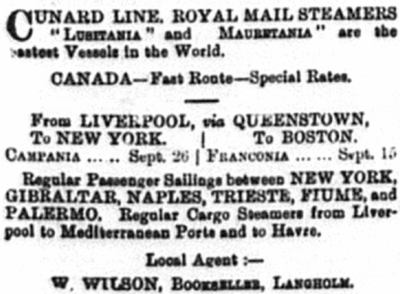
On board, the KOSB pipe band played daily. The ship berthed at the Greek island of Lemnos on 28th May and the battalion proceeded a few days later on the destroyer HMS Harpy and passenger/cargo vessel HMS Immingham. They landed at V beach (see map above) on 6th June, alongside the beached collier SS River Clyde, which acted as a quay.
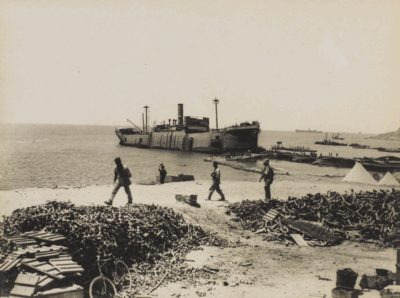
The beach was in range of Turkish artillery (nicknamed ‘Asiatic Annie’) on the other side of the narrow Dardanelles strait and came under regular attack from shrapnel and high explosive shells. The new arrivals dug themselves into new trenches and were fortunate at this point to have only two wounded and one with dysentery.
Next: Early Gallipoli action